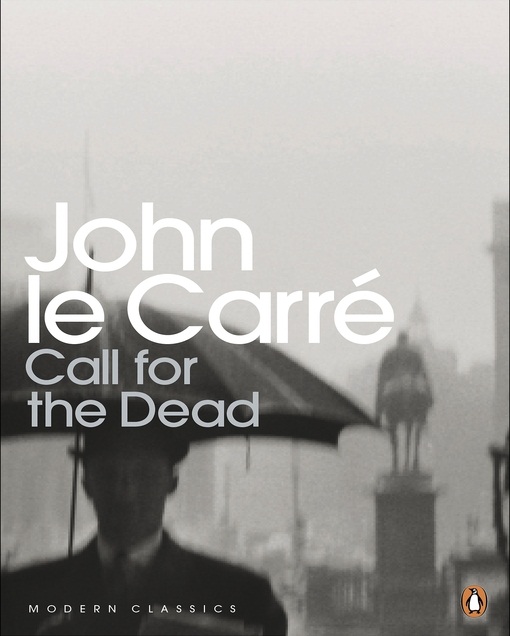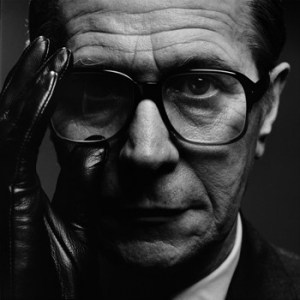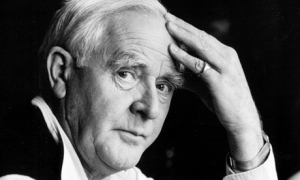Introduced to George Smiley through a Call for the Dead
Ok, what have I been reading this week? Well, for anyone who knows me then this choice might seem like a strange one to kick off a new column with. I tend to enjoy the more fantastic side of literature. I find that I gravitate naturally towards the horror and fantasy end of the market, although I have to admit that I’d be more inclined to go for the vintage stuff. I’m more likely, for instance, to have Arthur Machen on my shelves than Robert Jordan. That doesn’t mean anything; it’s just a matter of taste. What I really don’t understand, however, (and they’re out there) are people who only read a certain genre. I just don’t get that. Apart from anything else, dipping into other fields can deepen your understanding and appreciation if, say, you’re wrapped up in George R. R. Martin’s A Song of Ice and Fire.
Something else I’m going to say here, right at the outset. I get just as much pleasure out of a really well-done comic-book as I do out of Shakespeare. I could hedge my bets at this point and tell you that I consider it to be just a matter of degree, but that would be a bit disingenuous. No, I can get as much enjoyment from one as I can from the other.
One thing that I cannot abide is being spoken down to. There’s no reason why we should tolerate English that is deliberately meant to make the reader feel stupid. If you can’t explain in clear language, considering the thousands of words at your disposal, then that’s your problem, not ours. And if I’ve shelled out my hard-earned shekels in order to find myself reading something that should be taken before the Trades Description –how many dishonest blurb writers have you come across, anyone?—then you are damned sure that I believe I have the right to call you on it.
I don’t recall the critics’ name at what must be now about fifteen years remove, but something that was written in The Comics Journal magazine way back when remains with me. The writer said that he considered himself an elitist rather than a snob. As he put it: “A snob looks down on people; an elitist looks down on shit.” I think I know what he meant.
So: after that preamble, what was I reading? It was, of all things, a Cold War spy novel titled Call for the Dead.
I recently saw Tinker, Tailor, Soldier, Spy. If you’ve seen the Swedish director Tomas Alfredson’s previous effort, the outstanding horror film Let the Right One In, you’ll understand when I talk about the icy control that he brings to this very different outing. You’ll be shivering just looking at the screen, I swear. As good as the cast was, however, it was Gary Oldman’s Oscar-nominated performance as the Intelligence agent George Smiley that stayed with me afterwards. His acting is almost invisible here. Put it this way: you’d be hard-pressed to recognise him as the demented Beethoven-loving cop in Leon, that for sure; but then Oldman has specialised in being a chameleon throughout his career. He’s always been able to move seamlessly through very different characters– like going from the intellectual football hooligan of The Firm to his flamboyant performance as the famous Count in Bram Stoker’s Dracula.
As George Smiley he is minimalist in the extreme and captures perfectly that essential greyness that seems to go with these characters. Indeed, I found myself thinking that if anyone ever fancies doing a film about ex-British Prime Minister John Major then they need look no farther than Oldman. Of course, I’m thinking of the boring John Major, who worried about the greenness of his peas rather than the more interesting character who was outed after we discovered that he had been secretly shagging his colleague, the…ahem…exuberant and slightly scary Edwina Currie.
Anyway, this oddly interesting portrait of George Smiley made me want to find out a bit more about him. So I turned to his creator, a man who specialised in tales of espionage.
John le Carré was the pen name of David John Moore Cornwell, who, I was intrigued to discover, held down a real life job with MI5 and MI6. Well, as close to anything resembling what we’d call a real life as a job like that could be. Having had a vague idea that Smiley appeared only in a spy trilogy I was also surprised that in fact he features throughout most of le Carré’s novels, be it as full-blown appearances or as cameos.
So I went back to Smiley’s first showing, which as it happened is also le Carré’s first book, Call for the Dead, first published in 1961. Apparently he wrote it on the train as he commuted to and from MI5. Hence I’d imagine the need for a pen name. I wouldn’t suppose that spymasters would have been too keen on one of their own blithely scribbling away when they were still recovering from the embarrassing activities of Soviet spies like Burgess and Maclean.
The book appeared when that other famous fictional spy was at the height of his popularity, none other than Ian Fleming’s James Bond. I rather enjoyed the first half-dozen or so Bond novels, but himself and Smiley have little enough in common. In my probable naivety I can imagine that a spy of the sixties probably did operate roughly like good old George; but to be honest I’m not entirely sure what on earth Bond was. It hardly seems to have been a spy since he’s known everywhere he goes. Not only is there a trail of bodies to trip over but I can’t imagine Bond ever stooping to dining in George’s ‘Unrespectable Club’, which I rather like the sound of; and probably that says more about me than about Bond. One thing that the likes of Casino Royale and Call of the Dead do have in common is that they are both undeniably period pieces as much as any Jane Austen lark. The late fifties/early sixties comes across as only vaguely familiar to us, not to mention a very weird era indeed.
Opening with a potted biography of Smiley, the description of him as short and fat is jarring if you’ve just been watching Oldman; but the very first sentence: “…she described him to her astonished Mayfair friends as breathtakingly ordinary” sounds just right.
This was a bit more of a straightforward detective mystery than I was expecting; but le Carré peppers his easily-flowing story with wry comments on the society of his time, observations which often hold up well against our own and remind the reader that the more that things change the more they stay the same. He notes: “The effect of Lady Ann’s departure upon her former husband did not interest society—which indeed is unconcerned with the aftermath of sensation.” That seems quite recognisable with the casual cruelty of today.
This slim first novel deals with the aftermath of a suicide. A man that Smiley has been running a routine investigation on has killed himself; inexplicably it seems to Smiley as he had made clear that it would be taken no farther. But of course, as is par for the course in such books, things are not at all what they seem.
‘Krauts. Bloody Krauts.’
For the modern reader it’s interesting to recall how strongly feelings ran towards the re-arming of Germany so shortly after the end of World War Two. Living in a world where we’re completely over the top with the swinish concept of Political Correctness it’s almost refreshing to come across an outburst like this one from Detective Mendel:
“Krauts. Bloody Krauts. God, I hate them! …Huns. Jerries. Bloody Germans. Wouldn’t give you sixpence for the lot of them. Carnivorous ruddy sheep. Kicking Jews about again. Us all over. Knock ‘em down, set ‘em up. Forgive and forget. Why bloody well forget, I’d like to know? Why forget theft, murder and rape just because millions committed it?”
Whew! Come on, Detective. Don’t hold back. Tell us what you really think of them? I particularly like that “carnivorous bloody sheep” part
Actually, living in Ireland where we’re in complete bloody thrall to the Germans, I had to quite laugh at that little outburst. Our miserable, useless, gutless government are so used to doffing the cap on our behalf to Angela Merkel and Company that I’d probably vote for someone who wears it on his sleeve like Detective Mendel. Nice to see a guy in touch with his emotions.
Of course, charges of racism can also be levelled at the book when the normally quiet and unassuming Smiley almost goes apoplectic just thinking of the Cuban racing driver that his wife has left him for:
“No dream could survive the daylight of Ann’s departure with her saccharine Latin and his orange-peel grin. Smiley had once seen a news film of Alvida winning some race in Monte Carlo. The most repellent thing about him, he remembered, had been the hair on his arms. With his goggles and the motor oil and that ludicrous laurel-wreath he had looked exactly like an anthropoid ape fallen from a tree. He was wearing a white tennis shirt with short sleeves, which had somehow remained spotlessly clean throughout the race, setting off those monkey arms with repulsive clarity.”
Jeez, I love it! I don’t even know what an orange-peel grin is but I love that too!
Of course, in today’s pale and pallid age you are bound to get the Usual Suspects calling for censorship of such material. I mean, this is a world where those with nothing better to do want Edgar Rice Burroughs’s Tarzan of the Apes banned because sometimes Tarzan can be jolly beastly towards the cannibals who have moved into his neighbourhood. Or, philistines that they are, they can demand that all references to ‘Nigger Jim’ be removed from a work of genius like Mark Twain’s Adventures of Huckleberry Finn. No fear of any of them taking things into context, or making allowances for the times in which they were written. Nope; they are professional busybodies who dress up their Puritanism in concerns about racism. And if you don’t keep an eye on them then before you know it the bonfires have appeared again and the book burners are whooping their ignorant way around them.
Actually, I could probably make an argument for that little rant about our Cuban racing driver being quite justified from Smiley’s point of view, considering that he had run off with Mrs. Smiley. But I don’t think that I’ll bother. In fact, I get the feeling that le Carré just really enjoyed writing it.
If you want to make a start at exploring the strange, claustrophobic and paranoid world of George Smiley then I recommend Call to the Dead as a good place to start. I’ll definitely be reading more of him.
John Le Carre – Author




Recent Comments